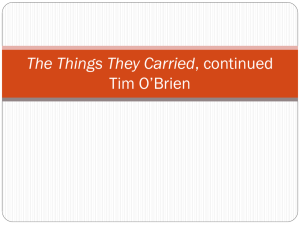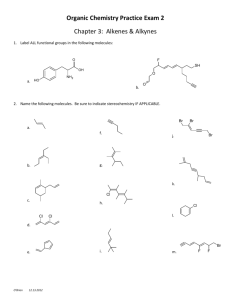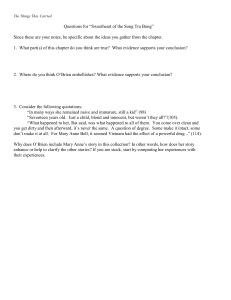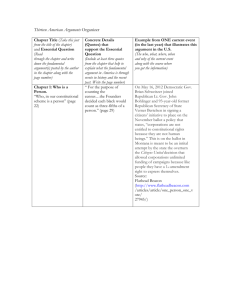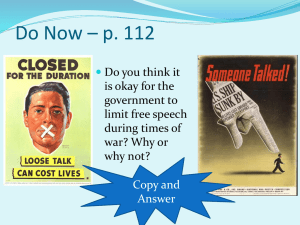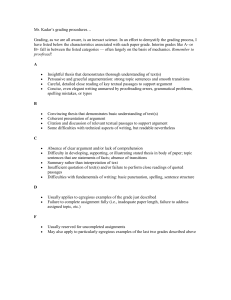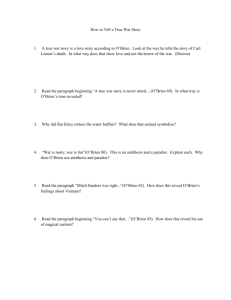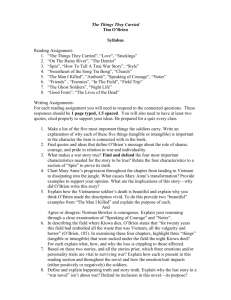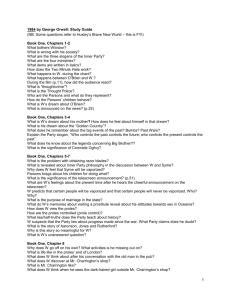feb 24
advertisement
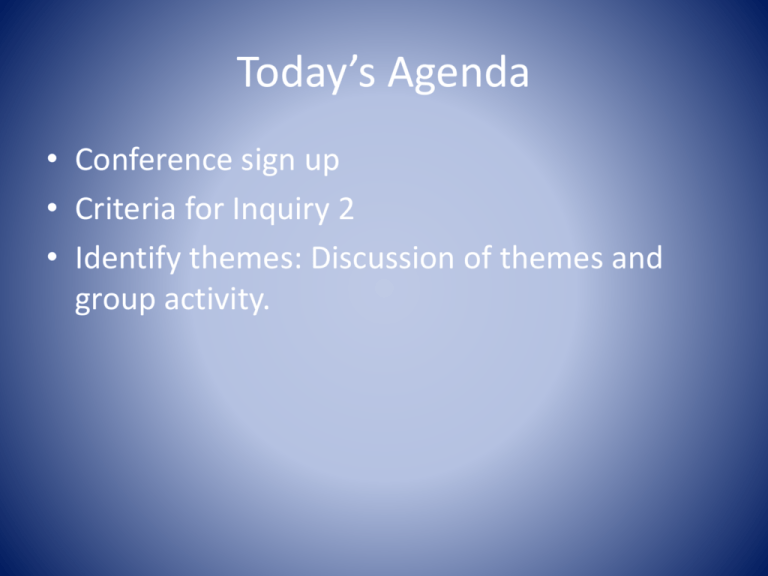
Today’s Agenda • Conference sign up • Criteria for Inquiry 2 • Identify themes: Discussion of themes and group activity. Criteria • PROCESS • ADHERENCE TO GUIDELINES • INQUIRY AND ARGUMENT • ORGANIZATION AND STRUCTURE • STYLE, FLUENCY, MECHANICS Process • Proposal-Complete, organized, clear and proofread. • Rough draft- substantial draft, on time. • Writer’s memo-thoughtful reflection on process, insightful analysis of your own work, unifying focus or topic discussed. Adherence to guidelines • Paper length- 4-6 pages • Four sources used-appropriate, scholarly articles and Works Cited page • Close reading- how do you tie in the book in your discussion and incorporate quotes • Textual support- quotes from sources, properly cited and formatted. Inquiry and argument • Is there a identifiable thesis? Is it specific, focused, and insightful? • How fully are thoughts developed? Complexity of argument? Do the sources relate? Are they synthesized into the paper? • No “dropped” quotes. Successfully paraphrased? Is the close reading utilized? • Is there a lot of textual support? Organization and Structure • Does it follow a logical flow? • Are the transitions smooth and related? • Is there support evidence for arguments? Style, Fluency, Mechanics • Are ideas well articulated? • Lack of wordiness, repetition, or “filler” content. • Is the paper clean and error free? Are there proofreading errors? Grammatical and punctuation problems? • Is the tone clear and academic? Group discussion Questions Social Pressure Many of the soldiers’ actions are the result of social pressure: O’Brien’s unwillingness to dodge the draft by fleeing to Canada even though he opposed the war, the dark humor the unit displays in the villages, and the fact that they would kill and die “because they were embarrassed not to” (p. 21). Identify instances where social pressure affects a character or the unit as a whole. Is this pressure positive or is it a negative influence? Support your answers with passages from the text. Personal Moral Code In your group identify one character you want to focus on and communally write a short analysis of the character’s individual moral code by quoting passages from the book. Share your findings with the class. How do the characters’ morals differ from one another? How are they the same? Truth O’Brien plays with the line between fact and fiction throughout the book. “By telling stories, you objectify your own experience. You separate it from yourself. You pin down certain truths. You make up others. You start sometimes with an incident that truly happened . . . and you carry it forward by inventing incidents that did not in fact occur but that nonetheless help to clarify and explain” (p. 158). Discuss ways O’Brien blurs the lines between reality and imagination. How does this contribute to our understanding of the war? Homework • Read “The Ghost Soldiers,” “Night Life” and “The Lives of the Dead.” Provide a brief summary of each of the stories (no longer than a paragraph for all) and discuss what conclusions O’Brien leaves his readers with at the conclusion of “The Things They Carried.” • Work on rough drafts!
